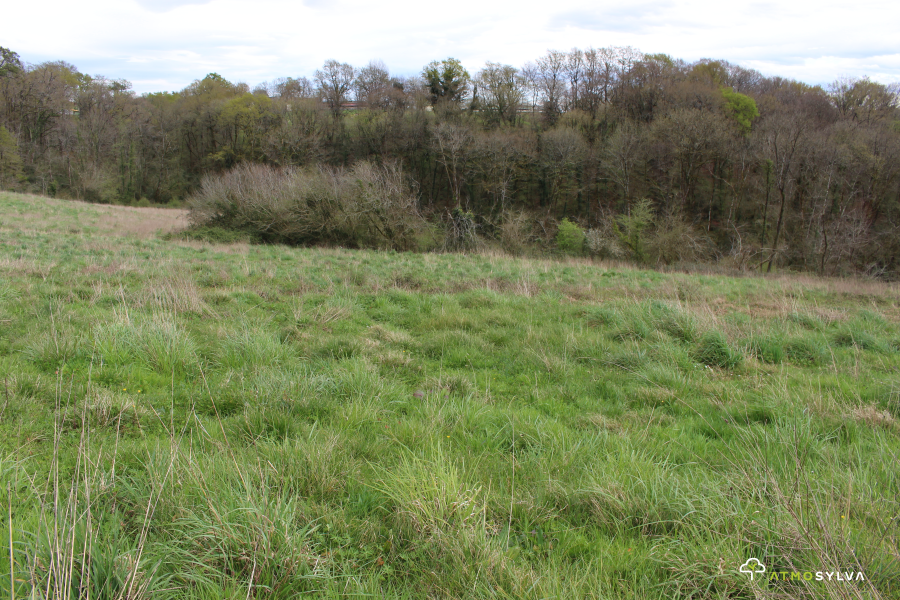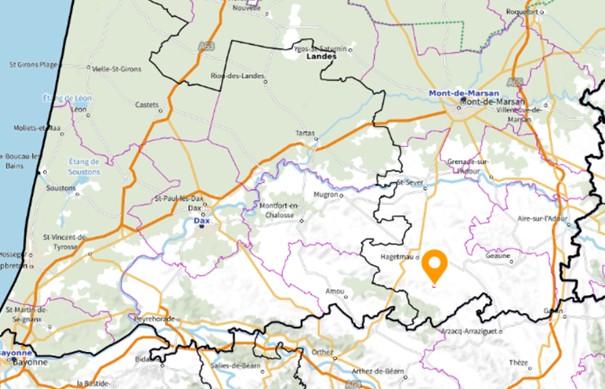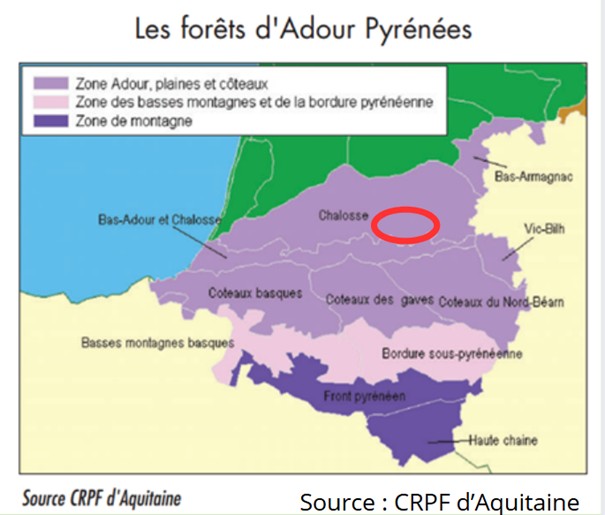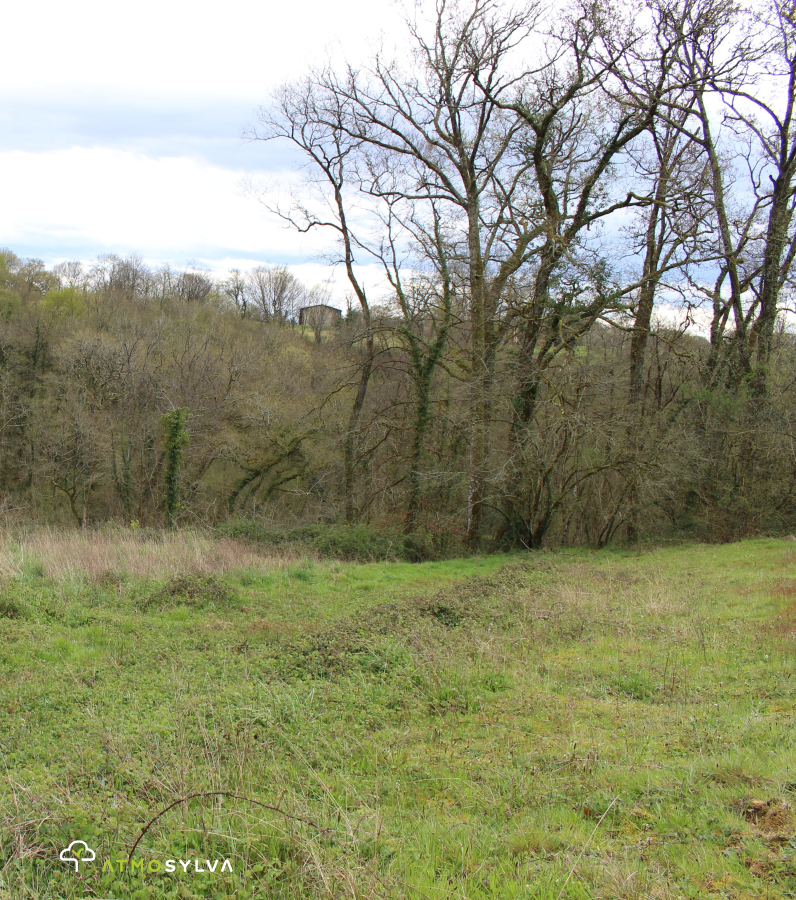Label Bas Carbone certified project
Located in Morganx, Landes (40), in the heart of the Adour region in the Nouvelle-Aquitaine region, this afforestation project covers 1.45 ha of fallow land, formerly a meadow. The species planted - Taeda Pine, Pubescent Oak, Hornbeam and Chestnut - were chosen for their adaptation to the environment and their contribution to the landscape and local biodiversity. The site, located 52 km from Dax, 38 km from Mont-de-Marsan and 9 km from Hagetmau, is close tu housing and blends harmoniously into an existing wooded area, reinforcing the continuity of the forest environment.
Below, to the west of the project, a stream meanders down a talweg. The forest's root system plays a key role in stabilizing the soil, limiting runoff and improving water quality. This low-carbon forest plays an active role in combating climate change, while preserving local ecosystems.

Morganx, Landes (40), in the Pays de l'Adour
1,45 ha planted
Taeda pine (incense pine), Pubescent oak, Hornbeam, Chestnut
About 2567 trees



The project is located in southern Landes (40), on the border with Pyrénées-Atlantiques, in the Pays de l'Adour region. This region is characterized by a landscape of hillsides and bocage hills, offering a marked contrast to the uniformity of the ocean and the Pyrenean mountains, is marked by decreasing rainfall towards the east, away from the coast and the Basque mountains, known for their mild, humid climate.
Land use in this area is dominated by agricultural land, with very limited forest cover, in stark contrast to the rest of the Landes department, where forests occupy around 61 % of the territory. This underlines the importance of afforestation projects such as Morganx, which help to prolong forest ecosystems in a predominantly agricultural landscape, while strengthening local ecological and climatic resilience.
The wooded parcel will be the subject of a sustainable management document to be created: Once the financing has been set up, the owner will adhere to a Code of Good Silvicultural Practice introduced by the Centre National de la Propriété Forestière (CNPF).
The project is in line with the Label Bas Carbone afforested method, a certification examined and issued by the French Ministry of Ecological Transition (DREAL)

This project combines a landscape dimension with a productive vocation. The deciduous species - Pubescent Oak, Hornbeam and Chestnut - were chosen for their ecological and aesthetic role, while Taeda Pine, less sensitive to wind that Maritime Pine, is favored for its rapid growth and quality wood production. This combination reconciles biodiversity with the economic value of afforestation.
On the periphery of the project, Sessile Oak and chestnut trees will be planted to form a leafy border. This vegetation belt promotes biodiversity by offering a variety of habitats, and limits the risk of fire spreading, thus strengthening the resilience of the forest massif. This landscaping approach also contributes to the harmonious integration of the afforestation into its surroundings.
The site is located close to several springs and watercourses, identified on IGN maps. Forest cover plays a key role in soil protection by intercepting and slowing down precipitation, thus reducing runoff and turbid water phenomena. This hydrological function is essential for preserving water quality and downstream aquatic ecosystems.
Most of the forestry companies involved in the project are located less than 50 km away, guaranteeing local management. The project is part of a PEFC-certified timber industry, supporting jobs that cannot be relocated, such as forest managers, nurserymen and lumberjacks. This local dynamic reinforces the circular economy and the sustainable development of forest resources.